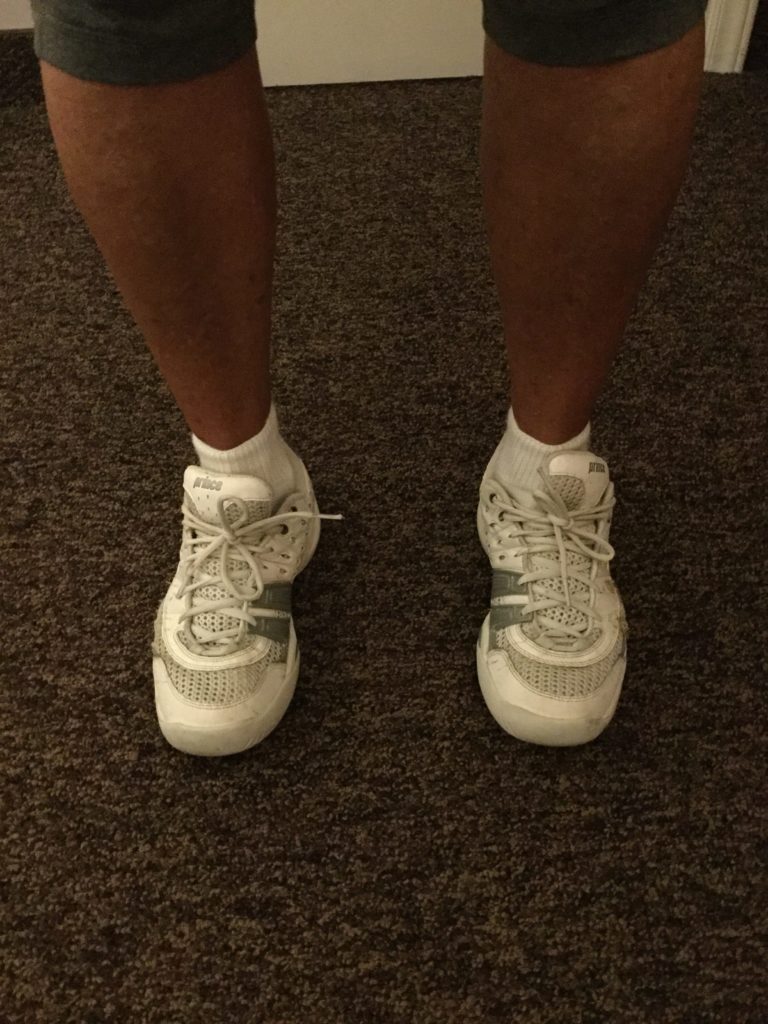Here is an image of a person with knee pain in her athletic footwear:

I am likely to find knee pain in this body because of the “attitude” depicted above at the feet. When the feet and shoes roll outward, weight is no longer distributed evenly through the whole foot as intended at rest. This foot has a resting attitude toward the motion of “supination”. Supination is the desired movement to lock the foot into a rigid lever during push off when walking or running. An extreme example of supination is a ballet dancer on their toes. When feet rest toward supination like in the photo above, they will not tend to pronate well during upright function. Natural shock absorption of the body will be lost. Forces then pass up the body to the knees, hips and spine. The feet above are less likely to pronate.
Pronation is the counter motion to supination and may best be visualized as “flat foot”. It is a motion necessary for shock absorption and suppleness of the foot during mid stance. During pronation we can sense the ground and adapt to varied surfaces and situations. This flexibility further helps us move our weight forward over a mobile ankle during walking or running. Pronation is on one end of the movement pendulum and supination is at the other. Supination and pronation are neither “good” nor “bad”, merely extremes of normal foot and ankle motion required for healthy upright function. Healthy resting posture for the foot is in the middle between pronation and supination.
The knee can be thought of as a fairly simple hinge joint much like the elbow. When a hinge joint like this becomes painful or worn down, often we will find the more complex and mobile joints above and below the knee, namely the ankle or hip joints, to be the source of the problem. Feet like the ones above will typically have less of the healthy motion allowing the knee to move well over the foot and ankle. This motion is needed to stimulate our big hip muscles like Glute Max. Once the feet and hips are working more efficiently, knee pain often vanishes entirely.



